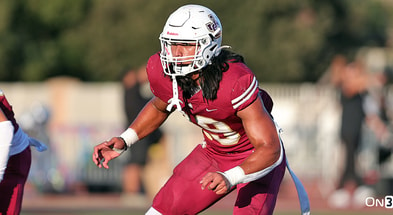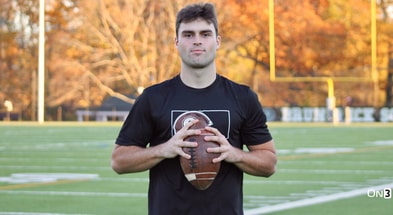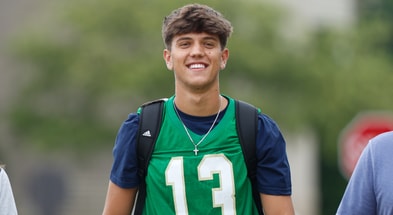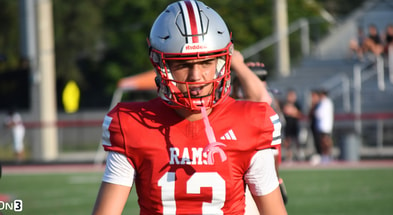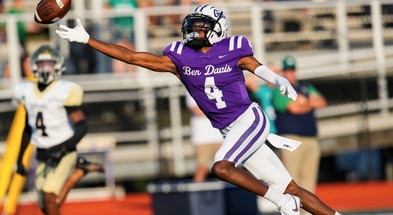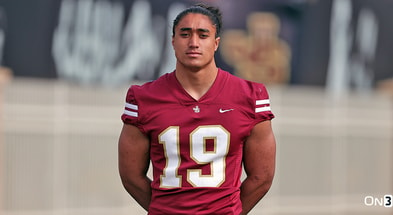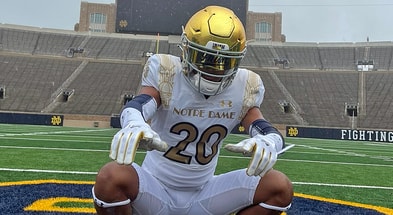Where Notre Dame stands in 2025 Industry Football Team Recruiting Rankings after wild week

What a stretch of several days it was for Notre Dame on the recruiting trail during the bye week.
It started off hot when Greenville (Ga.) High’s Antavious Richardson, the No. 353 overall player and No. 10 “athlete” in America according to the 2025 On3 Industry Ranking, gave an impromptu commitment to the Fighting Irish. He was previously pledged to the South Florida Bulls and had Alabama in pursuit of him, but Richardson gave the Irish a big pledge for their 2025 wide receiver haul.
And then came the news that many expected for the past couple months. Lucedale (Miss.) George County’s Deuce Knight, who checks in as the No. 37 recruit and No. 7 quarterback nationally per the 2025 On3 Industry Ranking, flipped his commitment to the Auburn Tigers.
When Richardson committed to the Irish, it moved Notre Dame’s standing in the 2025 Industry Ranking Football Team Recruiting Rankings up two spots to No. 10 overall. But after Knight’s flip, Notre Dame dropped down to No. 13.
Ohio State, Alabama, LSU, Auburn, Georgia, Texas, Oregon, Tennessee, Texas A&M, USC, Oklahoma and Miami are the programs that rank directly head of Notre Dame, respectively.
Bryant (Ark.) High’s Daniel Anderson, the No. 691 overall recruit and No. 56 running back in the land per the 2025 On3 Industry Ranking, also backed off his pledge. The two parties are going in a different direction. Anderson’s decommitment didn’t have an impact on Notre Dame’s team rankings.
The Irish signed top-10 recruiting classes in Freeman’s first two cycles as Notre Dame head coach (6th in 2022 and 10th in 2023. His program signed the No. 11 class in 2024 and is currently on track to finish outside the top 10 again. However, Notre Dame has much more work to do in the 2025 class, and results of those efforts could result in rankings changes.
The team recruiting rankings certainly aren’t the end-all, be-all, but it does give a data point to how Notre Dame’s class stacks up in one notable metric versus other powerhouse programs.
Top 10
- 1New
Texas vs. Arizona State odds
Early Peach Bowl line revealed
- 2New
ASU vs. Texas odds
Early Peach Bowl line released
- 3Hot
Dick Vitale
ESPN legend rips Lane Kiffin
- 4Trending
Paul Finebaum
ESPN host rips CFP amid blowout
- 5
Klatt blasts Kiffin
Ole Miss HC called out for tweets
Get the On3 Top 10 to your inbox every morning
By clicking "Subscribe to Newsletter", I agree to On3's Privacy Notice, Terms, and use of my personal information described therein.
Below is a look at the top 13 schools according to the 2025 Industry Team Recruiting Rankings, as of Sunday afternoon.
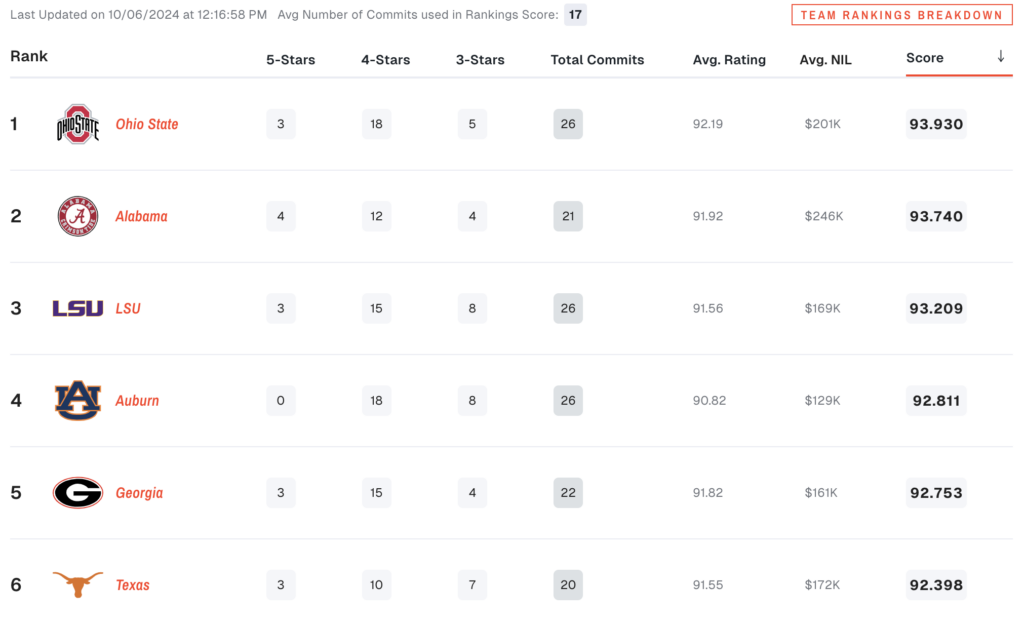
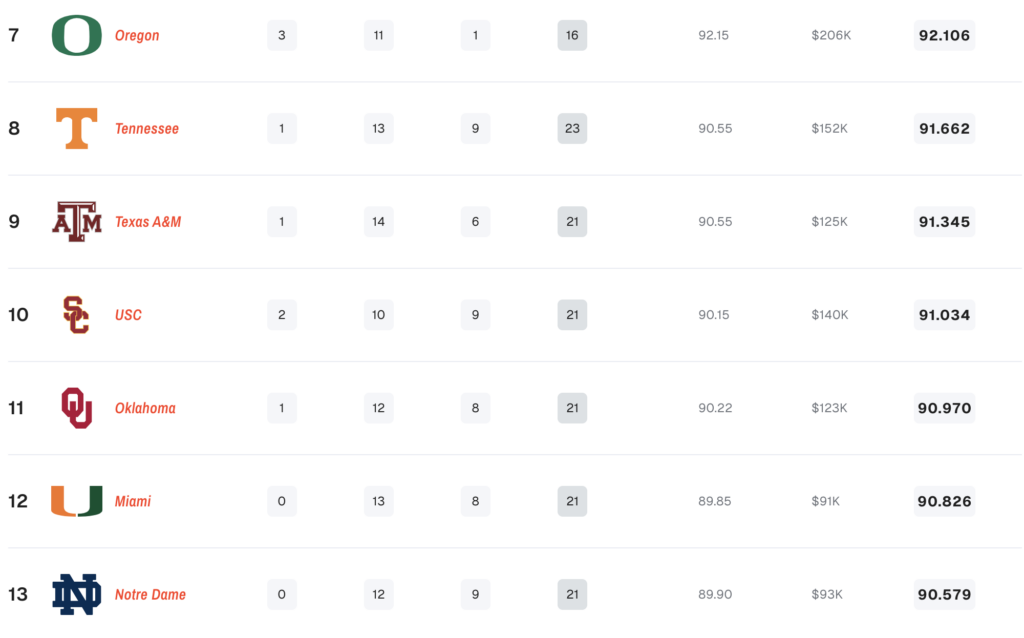
Understanding On3’s team rankings system
The On3 Industry Team Recruiting Ranking utilizes all four major recruiting media companies: On3, 247Sports, Rivals and ESPN.
Instead of a total points system like at Rivals, the On3 Industry Team Ranking uses a score average of the player rankings, which solves the problem of varying class sizes during the recruiting cycle. It compiles the highest-rated commits for each team up to a total based on a rolling average of current total commitments among Power Five schools.
The current average number of commits in the 2025 class used in the rankings score is 17. This means that of Notre Dame’s 21 commitments, only the 17 highest-ranked players are used for the rankings score.
To further explain that point: Notre Dame’s 21 commits have an average recruit rating of 89.90, but that is not the score used in the team ranking. Only Notre Dame’s top 17 commits are being used in the Industry Team Ranking, and the Irish’s score with that group is 90.579 — this is the number used for the class ranking, as seen in the image above.
With this model, there are no bonus points for having more commitments than other teams, and only small deductions occur when a team has fewer commitments than the rolling average. Unlike distribution (bell) curves, this model doesn’t disproportionately weight a team’s top three or four highest-rated commits and is a more accurate representation of an entire class.


